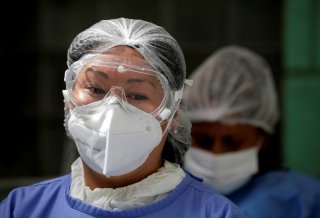
In the Spanish study, which was published in JAMA Dermatology, researchers examined twenty-one COVID-19 patients at Ramon y Cajal University Hospital in Madrid between March 30 and April 8.
Enanthems (rash-like lesions inside a mouth) were observed in six of the individuals ranging in ages forty to sixty-nine. Four of the six were female.
“This work describes preliminary observations and is limited by the small number of cases and the absence of a control group,” the researchers wrote in the study.
“Despite the increasing reports of skin rashes in patients with COVID-19, establishing an etiological diagnosis is challenging. However, the presence of enanthem is a strong clue that suggests a viral etiology rather than a drug reaction, especially when a petechial pattern is observed.”
The study added that “many patients with suspected or confirmed COVID-19 do not have their oral cavity examined”—largely due to safety protocols put in place after the pandemic started.
Given the fact that patients are often wearing face masks or coverings and the mouth is not examined, there’s potentially even more individuals who may have these symptoms, the researchers noted.
Enanthems were previously observed in several coronavirus-infected patients in Italy, the study said.
Last month, the Centers for Disease Control and Prevention added congestion or runny nose, nausea and diarrhea to its expanding list of COVID-19 symptoms, which may appear two to fourteen days after exposure to the virus.
If any of these symptoms are spotted, the CDC recommends that individuals stay in a specific room and away from other people and pets in the home. If possible, they should use a separate bathroom.
There are now more than 14.7 million confirmed cases of coronavirus worldwide, including at least 612,000 deaths, according to the latest data from the WHO.


No comments:
Post a Comment